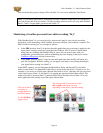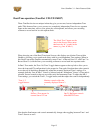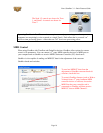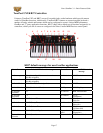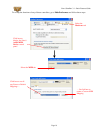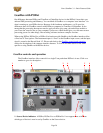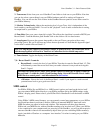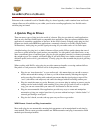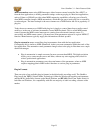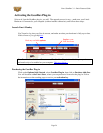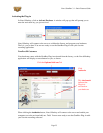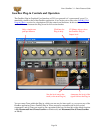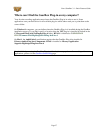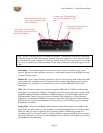
Line 6 GearBox 3.1 – Basic Features Guide
GEARBOX (PLUG-IN) BASICS
Welcome to the wonderful world of GearBox Plug-in, where legendary studio-standard tone and classic
vintage effects are all available to you within your favorite recording application, in a flexible native
software plug-in format!
A Quickie Plug-in Primer
There are many types of plug-ins in the world of software. Plug-ins are relatively small applications
that can only run when loaded inside a compatible host application. Plug-ins operate within the host
application to extend the capabilities of the host. In the world of music software, audio plug-ins find
frequent use inside audio/MIDI host applications, commonly referred to as DAWs (Digital Audio
Workstations). Audio plug-ins provide signal processing for your audio tracks or live audio input.
A helpful analogy for plug-ins is to think of them as effects pedals. Effects pedals change the tone of
your bass or guitar before the signal reaches your amplifier. As with pedals, rack effects units, or any
other conventional piece of outboard gear, plug-ins provide graphical controls for whatever parameters
they might expose. For example, a distortion plug-in will most likely have similar controls to a typical
distortion pedal (such as drive, gain and tone). Visually, plug-ins often resemble the physical gear they
emulate.
When working with DAWs, using plug-ins provides numerous benefits over using outboard effects
like pedals or rack processors. Here are a few of the primary benefits:
• Plug-ins are “non-destructive” to your audio track – this means that you can add or remove
effects and tweak their settings as often as you like without actually affecting the original
audio recording. Recording with outboard gear means that the signal going to tape will be
“wet” (with effects and amp tone) and cannot be changed without recording another pass.
• Plug-ins sound the same way twice. Because you can store plug-in settings as presets, precise
settings can be loaded reliably with tweaking. Every time you go back to work on a specific
song, you can rest assured that your tones will be identical to the last session.
• Plug-ins are automatable. Host applications provide easy ways to create and manipulate
automation, giving you surgical precision of your tone without having to “ride the faders” of
external gear during a record pass.
• Plug-ins don’t break, corrode, take up space on your floor or get stolen
MIDI Remote Control and Plug-in automation
Most audio plug-ins are automatable, meaning their parameters can be manipulated in real-time by
some method. The two most prevalent methods are MIDI automation and plug-in automation. Both
methods provide unique benefits.
Page 22



